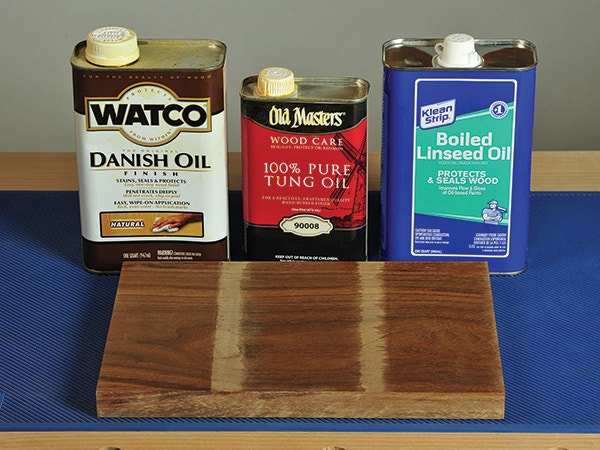Matte Finishing Techniques
A flat or matte finish is perfect for those who prize the look of natural wood. Unlike shiny finishes, which can be distracting, flat or matte finishes leave a silky-smooth surface while capturing all the rich colors wood has to offer.
A Bit of History
At one time, the definition of a quality furniture finish was a "piano finish": thick and glossy. Matte and dead-flat finishes really didn't gain popularity in the U.S. until Danish Modern furniture started to hit big during the 1960s.
Most Danish Modern pieces sported flat or matte finishes. Since they were often made of walnut, marketing pundits dubbed the finish "oiled walnut." In reality, the vast majority of those commercially made pieces were not oiled, nor were they finished in what we know as Danish oil.
Many of those that came from Europe were done in a very thin film of very low luster conversion varnish or catalyzed lacquer. Others were simply sprayed with a few thin coats of dead-flat or matte lacquer. The look caught on, but these days, many woodworkers use Danish oil to obtain that look.
That's certainly valid, and you should feel free to use it if you like. However, there are other options, so let's look at a few.
Wipe-off
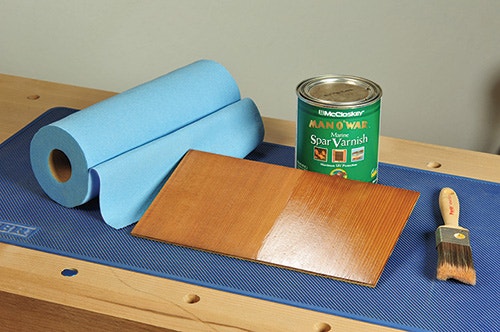
Most brushable finishes are made to go on thick and flow out shiny. By contrast, wipe-on finishes stay thin and don't develop a lot of gloss. Incidentally, I prefer to call them wipe-off finishes, since how you wipe them off is far more important than how you apply them.
There are any number of wipe-off finishes you can use to get a flat, rich-looking finish, including boiled linseed oil, the aforementioned Danish oil and tung oil finish. They are frightfully easy to apply but build up rather slowly. Just as easy, but quicker to build and a tad more durable, is oil-based varnish.
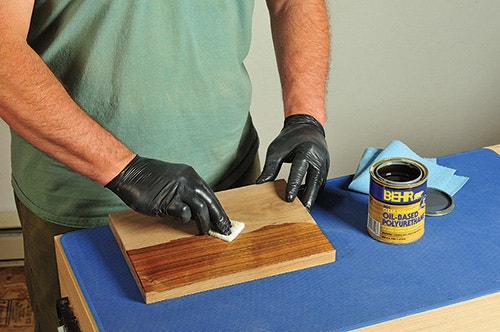
Take any alkyd or polyurethane oil varnish and apply it to the wood without thinning. Don't worry about the sheen level printed on the can. The process of wiping off the finish will make it appear flat, and it will remain that way as it dries. Thus, you can use gloss, satin or flat varnish and still get the same look.
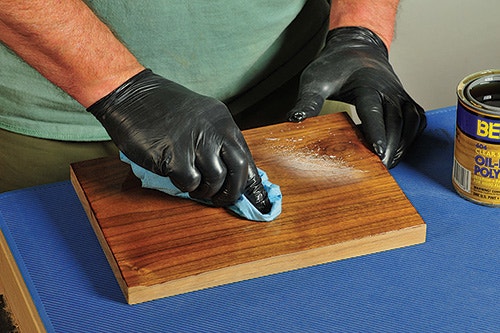
To make it easier to manipulate the fairly thick liquid, I scrub it onto the wood using either white or gray Scotch-Brite™. Once you have it coated, wipe it all off evenly and thoroughly.
It may feel like you are removing all the varnish you just applied, but in reality you will be leaving a thin, even film of finish. You'll find that this method gives you a finish in fewer coats and less time than plain oil, yet maintains that almost bare, natural look to the wood.
Shellac and Wax

For a quick, thin, matte finish, flood the wood with shellac, then wipe off the excess while it’s still wet. Let it dry several hours, then apply paste wax with #0000 steel wool. The steel wool will smooth the wood surface as you wax. Wipe off all the wax immediately; letting it dry and buffing it will add shine, which we don't want.
Spray
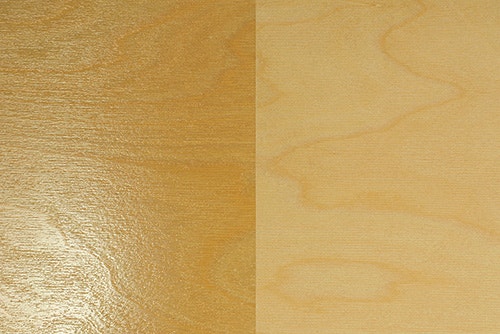
If you've done a lot of spraying, you will know that flat lacquer flows out and levels far better than gloss. The odds of being able to come directly off the gun with a flawless gloss finish, without rubbing it out, are slim, but with matte or flat finishes, the odds go way up.
For lacquer, plan on spraying three or four very thin but wet coats, sanding very lightly with 400-grit paper after only the first coat to knock down any raised grain. That should give you an even appearance and, if your gun is set up correctly, a smooth surface.

Conversion varnish or catalyzed lacquer sprays the same way. Even if you must thin it a bit for good flow-out, you'll probably need only two coats to get an even sheen and adequate build because these finishes generally boast a much higher solids content than nitrocellulose or acrylic lacquers.
Water-based Clear Flat

One of the newer materials to show up is clear, dead-flat water-based coating. It's ready to spray right from the can without thinning or alteration, or you can apply it with a paint pad, foam brush or synthetic bristle brush. As with lacquer, you'll notice it flows out somewhat better than its glossy cousins. It, too, tends to have higher solids content than lacquer, so two coats should be sufficient on raw wood, and you can get away with only one over painted surfaces.

One big advantage to water-based flat is that it is water clear. That means it won't discolor or yellow either white or light-colored paint, which often happens with both lacquer and varnish. Because of that, it is ideal for top-coating white or pastel colors; ultra-light wood, like white maple or holly; and pickled or limed oak finish.
When to Use It
Flat finishes are perfect for any piece where the look of natural wood is paramount. They're easy to apply, look great and don’t show the fine scratches of daily wear nearly as quickly or obviously as gloss finishes. Best of all, in most cases you can come off the rag or the gun without having to rub them out.
Water-based flat finish is also ideal for topcoating over rustic looks, like antique white, milk paint or aged chalky paint. You can seal in any secondary coloring step, like dry brushing or glazing, and bring the whole finish into the same uniform sheen while adding an extra bit of protection.
In short, flat finishes are inconspicuous, look natural, hide minor wear marks and take a fraction of the effort of a gloss finish. That’s a win-win in my book.
Keep the inspiration coming!
Subscribe to our newsletter for more woodworking tips and tricks
